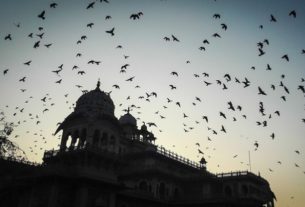A book that gently introduces some of the original sources on Indian History for young readers…
“In the east there is a high plateau beneath which there are mines of gold, where there are found the ants that dig for that metal. They are as big in size as wild foxes and run with amazing speed.“
Thus wrote, Megasthenes, circa 300 BC, in his four volume Indica – which is lost now and only excerpts remains thanks to works by later historians like Arrian & Strabo – while on his diplomatic visit to the court of Chandragupta in Pataliputra.
“The Sultan of Bidar went hunting on Tuesdays and Thursdays with his three viziers, his mother and his lady, and a train of 10,000 men on horseback, 50,000 on foot and 200 elephants adorned in gilded armour. In front there were 100 horn-men,100 dancers, 300 common horses in golden clothing, 100 monkeys, and 100 concubines…“.

Such where the sights that Afanasy Nikitin, one of the first Europeans to journey to India – during early 1470s – describes about India in his travel journals.
“In the Country of Gold-digging Ants“, chronicles a selection of such astonishing ‘stories’ from the travel journals of legendary explorers and historical figures who visited India from 3rd century BC till the mid 20th century.
Targeted at a young audience this book introduces eleven such travelers – including some legands like Megasthenes, Fa-hsien, HiuenTsang, Alberuni, Marco Polo, Ibn Batutah – and their travel writings. The author take excerpts from these travel journals and adds her own commentary to give a decent overview about each traveler covered.
The way in which the book captures some of the most historically epic travel narratives in a single volume makes it a nice companion for kindling a spark of interest in history and historic travel writings among young readers.





